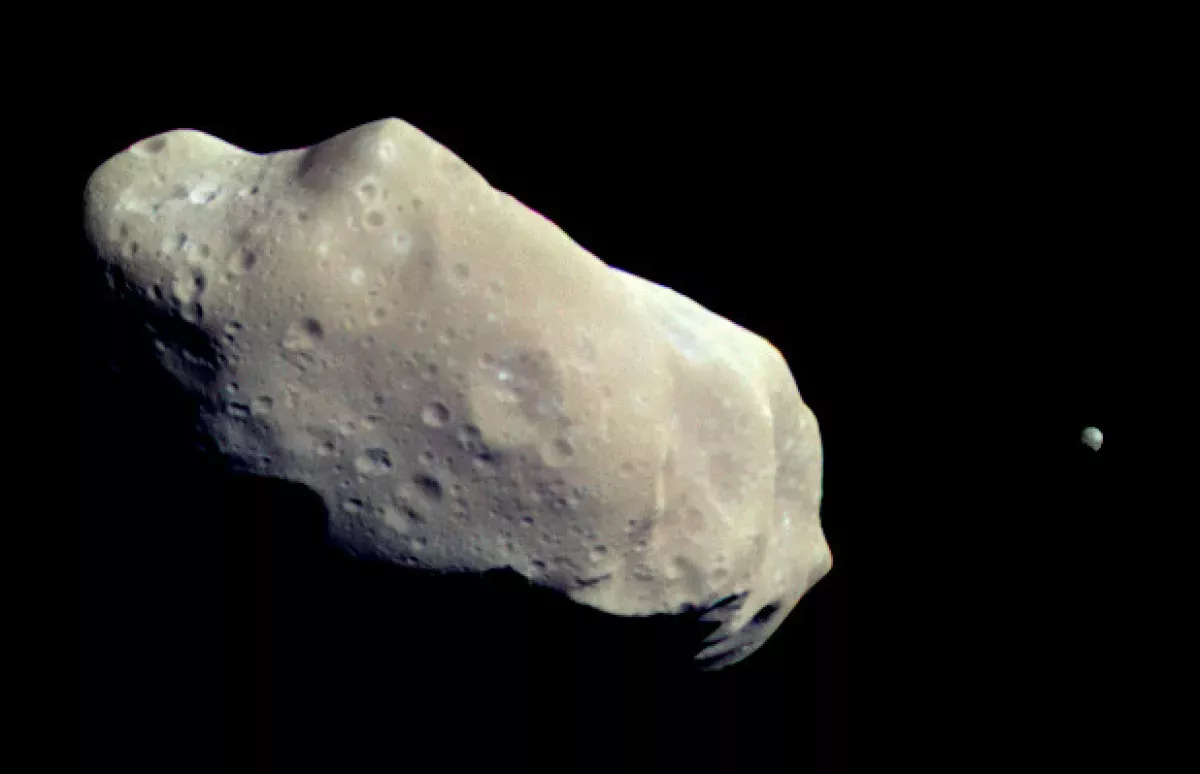Asteroids are minor planets orbiting the inner Solar System or co-orbiting with Jupiter, distinguished from planets and comets. Lacking an atmosphere, they're composed of rock, metal, or ice, categorized as C-type (carbonaceous), M-type (metallic), or S-type (silicaceous). Their sizes vary dramatically, from under a kilometer to Ceres, a dwarf planet nearly 1000 km wide. Unlike comets, asteroids lack a coma or tail, though there's growing evidence of a continuum between the two.
1914: Asteroid designation with Greek letter
In 1914, a number of variations of methods for listing new asteroids were tried, including designations that included the year plus a Greek letter.
1918: Hirayama families recognized
In 1918, Kiyotsugu Hirayama first recognized main belt families, which are often called Hirayama families in his honor.
1925: Establishment of chronological numbering system
In 1925, a simple chronological numbering system for asteroids was established.
1937: 69230 Hermes approached Earth
In 1937, 69230 Hermes approached within 0.005 AU of Earth, leading astronomers to realize the possibilities of Earth impact.
1967: Project Icarus contingency plan designed
In 1967, "Project Icarus" was one of the first projects designed as a contingency plan in case of collision with 1566 Icarus.
1975: Development of asteroid taxonomic system
In 1975, an asteroid taxonomic system based on color, albedo, and spectral shape was developed by Chapman, Morrison, and Zellner. This system was created to classify asteroids based on composition of the asteroid's surface material.
1977: Discovery of 2060 Chiron
In 1977, astronomers discovered 2060 Chiron, the first of the small bodies that permanently resided further out than Jupiter, now called centaurs.
1979: 7968 Elst–Pizarro discovered as asteroid
In 1979, the first active asteroid, 7968 Elst–Pizarro, was first discovered as an asteroid.
1984: Tholen classification proposed
In 1984, David J. Tholen proposed the Tholen classification, which was based on data collected from an eight-color asteroid survey performed in the 1980s. This classification resulted in 14 asteroid categories.
1990: Discovery of Acfer 049 meteorite
In 1990, the Acfer 049 meteorite was discovered in Algeria.
1991: 951 Gaspra photographed in close-up
In 1991, 951 Gaspra became the first asteroid to be photographed in close-up, imaged by the Galileo probe.
1992: Discovery of 15760 Albion
In 1992, 15760 Albion was discovered. It was the first object beyond the orbit of Neptune (other than Pluto).
1993: 243 Ida and its moon Dactyl photographed
In 1993, the Galileo probe imaged 243 Ida and its moon Dactyl.
1996: Tail of 7968 Elst–Pizarro found
In 1996, Eric Elst and Guido Pizarro found that 7968 Elst–Pizarro had a tail and gave it the cometary designation 133P/Elst-Pizarro.
1997: NEAR Shoemaker photographed 253 Mathilde
In 1997, NASA's NEAR Shoemaker probe photographed 253 Mathilde.
1998: Provisional designation of apparitions
In 1998, the process for assigning a provisional designation to a newly found asteroid involved assigning a designation which included the year of discovery.
1999: 9969 Braille visited by Deep Space 1
In 1999, the Deep Space 1 probe briefly visited the asteroid 9969 Braille en route to another destination.
2001: NEAR Shoemaker landed on 433 Eros
In 2001, the NEAR Shoemaker spacecraft landed on the surface of the asteroid 433 Eros.
2002: 5535 Annefrank visited by Stardust
In 2002, Stardust briefly visited the asteroid 5535 Annefrank en route to another destination.
2002: Asteroid provisional designation example
In 2002, an example of a newly discovered asteroid receiving a provisional designation was mentioned: 2002 AT4.
2002: Asteroid 2002 AA29 discovered
In 2002, asteroid 2002 AA29, which has an unusual horseshoe orbit that is co-orbital with Earth, was discovered.
2002: SMASS classification
In 2002, the Small Main-Belt Asteroid Spectroscopic Survey resulted in a modified version of the Tholen taxonomy with 24 different asteroid types.
November 2005: Hayabusa studied 25143 Itokawa
From September to November 2005, the Japanese Hayabusa probe studied the asteroid 25143 Itokawa in detail.
2006: Main-belt comets designated
In 2006, astronomers David Jewitt and Henry Hsieh originally designated active asteroids as main-belt comets (MBCs).
2006: IAU created the class of dwarf planets
In 2006, the IAU created the class of dwarf planets for the largest minor planets. Ceres, the largest object in the asteroid belt, was placed in this category.
2006: IAU introduced the term Small Solar System Body
In 2006, the International Astronomical Union (IAU) introduced the term small Solar System body, defined as an object in the Solar System that is neither a planet, a dwarf planet, nor a natural satellite.
2007: Dawn spacecraft launched
In 2007, NASA launched the Dawn spacecraft, which orbited 4 Vesta for a year, and observed the dwarf planet Ceres for three years.
2008: 2867 Šteins and 21 Lutetia visited by Rosetta
In 2008, the Rosetta probe briefly visited the asteroids 2867 Šteins and 21 Lutetia en route to another destination.
June 2010: Hayabusa returned samples from Itokawa
On June 13 2010, the Japanese Hayabusa probe returned samples of the asteroid 25143 Itokawa's surface to Earth.
2011: Estimated discovery of near-Earth asteroids
As of 2011, it was estimated that 89% to 96% of near-Earth asteroids one kilometer or larger in diameter had been discovered.
2012: 4179 Toutatis visited by Chang'e 2
In 2012, China's lunar orbiter Chang'e 2 flew within 3.2 km of the asteroid 4179 Toutatis.
October 2013: Detection of water on an extrasolar body
In October 2013, water was detected on an extrasolar body for the first time, on an asteroid orbiting the white dwarf GD 61.
2013: NASA requires at least five years of preparation to intercept asteroid
According to expert testimony in the United States Congress in 2013, NASA would require at least five years of preparation before a mission to intercept an asteroid could be launched.
January 2014: Detection of water vapor on Ceres
On January 22, 2014, European Space Agency (ESA) scientists reported the definitive detection of water vapor on Ceres, the largest object in the asteroid belt, using the Herschel Space Observatory.
2014: Hayabusa2 launched
In 2014, JAXA launched the Hayabusa2 probe to asteroid 162173 Ryugu.
2017: Observations of Hygiea with Very Large Telescope
In 2017, observations were taken with the Very Large Telescope's SPHERE imager to determine the shape of the asteroid Hygiea.
2017: Discovery of moons of asteroid 3122 Florence
In 2017, the asteroid 3122 Florence's two moons were discovered by radar imaging during the asteroid's approach to Earth.
June 2018: National Near-Earth Object Preparedness Strategy Action Plan released
In June 2018, the National Science and Technology Council warned that the United States is unprepared for an asteroid impact event, and has developed and released the "National Near-Earth Object Preparedness Strategy Action Plan" to better prepare.
October 2018: LINEAR system discoveries
As of October 29, 2018, the LINEAR system alone had discovered 147,132 asteroids.
2018: Observations of Hygiea with Very Large Telescope
In 2018, observations were taken with the Very Large Telescope's SPHERE imager to determine the shape of the asteroid Hygiea.
November 2019: Detection of sugar molecules in meteorites
In November 2019, scientists reported detecting sugar molecules, including ribose, in meteorites for the first time, which suggests chemical processes on asteroids can produce essential bio-ingredients important to life.
2019: Acfer 049 shown to have ultraporous lithology
In 2019, the meteorite Acfer 049 was shown to have an ultraporous lithology, suggesting it may represent fossils of primordial ice.
2020: Hayabusa2 delivered samples to Earth
In 2020, the Hayabusa2 probe delivered samples from the asteroid 162173 Ryugu to Earth.
2020: OSIRIS-REx collected sample from Bennu
In 2020, the OSIRIS-REx mission studied Bennu and collected a sample.
October 2021: Number of NEAs with moons
As of October 2021, there were 85 near-Earth asteroids known to have at least one moon.
2021: OSIRIS-REx departed Bennu with sample
In 2021, the OSIRIS-REx probe departed the asteroid 101955 Bennu with a sample from its surface.
April 2022: Number of known near-Earth asteroids
As of April 2022, there were 28,772 known near-Earth asteroids, 878 of which have a diameter of one kilometer or larger.
September 2022: DART crashed into Dimorphos
In September 2022, DART deliberately crashed into the minor-planet moon Dimorphos of the double asteroid Didymos.
September 2022: Double Asteroid Redirection Test successfully altered orbit of Dimorphos
In September 2022, the Double Asteroid Redirection Test spacecraft successfully altered the orbit of the non-threatening asteroid Dimorphos by crashing into it.
September 2023: OSIRIS-REx sample delivered to Earth
In September 2023, the OSIRIS-REx mission delivered a sample from the asteroid 101955 Bennu to Earth.
October 2023: Launch of NASA's Psyche mission
In October 2023, NASA launched the Psyche mission. The mission aims to study the metallic asteroid Psyche.
October 2023: Psyche launched
In October 2023, NASA's Psyche mission was launched to study the large metallic asteroid of the same name.
October 2024: Launch of ESA's Hera mission
In October 2024, ESA launched the Hera mission. The Hera mission is intended to study the results of the DART impact.
October 2024: Hera launched
In October 2024, ESA's Hera mission was launched to study the results of the DART impact on Dimorphos.
2024: Dark comets identified
In 2024, dark comets, asteroids that show non-gravitational acceleration but have no coma or tail, were first identified.
May 2025: Minor Planet Center data on minor planets
As of May 2025, the Minor Planet Center had data on 1,460,356 minor planets in the inner and outer Solar System, of which about 826,864 had enough information to be given numbered designations.
May 2025: Launch of CNSA's Tianwen-2
In May 2025, CNSA launched the Tianwen-2 mission. The mission aims to explore the co-orbital near-Earth asteroid 469219 Kamoʻoalewa and the active asteroid 311P/PanSTARRS, also to collect samples of the regolith of Kamo'oalewa.
May 2025: Tianwen-2 launched
In May 2025, CNSA's Tianwen-2 was launched to explore the co-orbital near-Earth asteroid 469219 Kamoʻoalewa and the active asteroid 311P/PanSTARRS.
2027: Lucy to reach 3548 Eurybates
The Lucy mission is set to reach its first main target, 3548 Eurybates, in 2027.
2029: OSIRIS-APEX to explore Apophis
In 2029, the OSIRIS-APEX mission will explore the near-Earth asteroid Apophis.
2029: Psyche to arrive at asteroid Psyche
The Psyche mission is on track to arrive at the asteroid Psyche in 2029.
2031: Hayabusa2 expected to arrive at new target
The Hayabusa2 spacecraft is currently on an extended mission and is expected to arrive at a new target in 2031.
Mentioned in this timeline
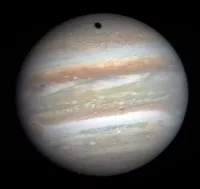
Jupiter is the fifth and largest planet from the Sun...
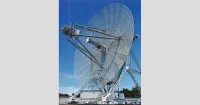
Radar is a radiodetermination system using radio waves to detect...
NASA the National Aeronautics and Space Administration is an independent...
China officially the People's Republic of China PRC is an...
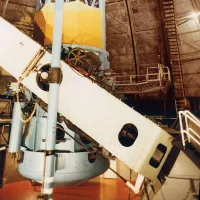
A telescope is an instrument used to observe distant objects...
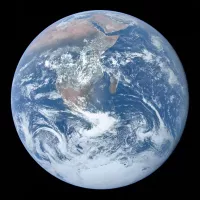
Earth the third planet from the Sun is unique in...
Trending
Brandon Lowe is a professional baseball player primarily a second baseman currently playing for the Tampa Bay Rays in MLB...

16 days ago Garrett Wilson's Week 14 Return: Injury Update and Potential Impact on Jets

17 days ago Marco Rubio's Venezuela Stance: War Sales Pitch and Social Media Influence Examined

4 months ago Texas AG probes Xcel Energy over ESG, DEI links to 2024 wildfires.

2 months ago Rivian Announces Layoffs of Over 600 Workers Amid Electric Vehicle Market Slowdown

5 months ago Paul Rudd Stars in New Dark Comedy with Tim Robinson; Friendship Explored
Popular

Candace Owens is an American conservative political commentator and author...

XXXTentacion born Jahseh Dwayne Ricardo Onfroy was a controversial yet...

Tucker Carlson is an American conservative political commentator known for...

Ilhan Omar is an American politician currently serving as the...

Kashyap Pramod Patel is an American lawyer who became the...

Bill Gates an American businessman and philanthropist revolutionized personal computing...
